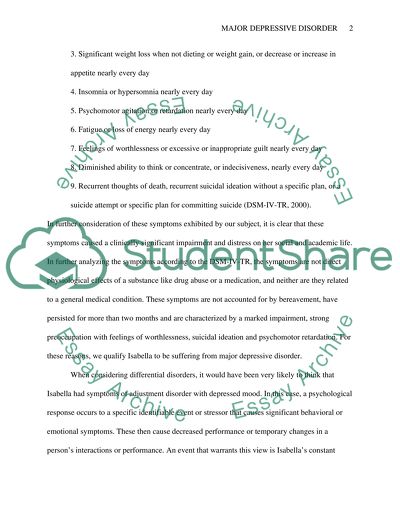Cite this document
(“Major Depressive Disorder Essay Example | Topics and Well Written Essays - 1750 words - 1”, n.d.)
Retrieved from https://studentshare.org/psychology/1445110-case-study-final-paper
Retrieved from https://studentshare.org/psychology/1445110-case-study-final-paper
(Major Depressive Disorder Essay Example | Topics and Well Written Essays - 1750 Words - 1)
https://studentshare.org/psychology/1445110-case-study-final-paper.
https://studentshare.org/psychology/1445110-case-study-final-paper.
“Major Depressive Disorder Essay Example | Topics and Well Written Essays - 1750 Words - 1”, n.d. https://studentshare.org/psychology/1445110-case-study-final-paper.


